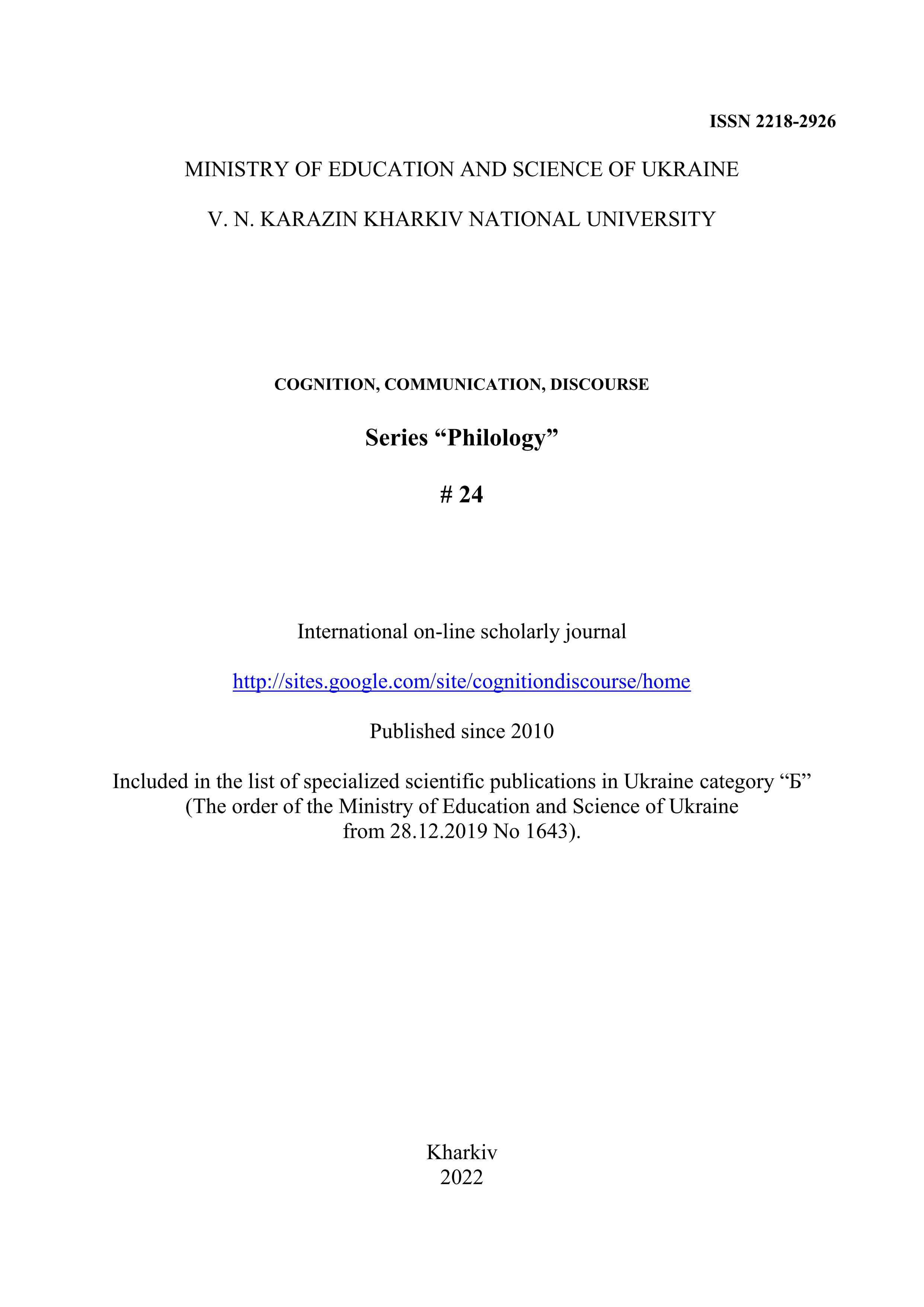Professional wrestling and identity construction in the realm of social media
Abstract
The article presents an analysis of the problems that professional wrestlers face in their utilization of social media and the various strategies they employ in order to create a successful cohesion between the identity they present on the ring and their social media presence. Because of the metaphysical split that lies in the very foundation of wrestling the wrestler exists in two different realities—the world of everyday ordinary life on one side and the world of kayfabe on the other. The consequences from that grow in importance with the transition of wrestling into a televised form of entertainment and the conflict becomes even more emphasized when wrestling comes in contact with the realm of social media. The wrestler may choose to avoid social media altogether or she may choose to utilize social media as a continuation of her in-ring persona, or she may choose to initiate an interaction between the reality spheres of social media and wrestling. In the second part, I examine the challenges that the wrestling promotions face in their attempts to create a benign and engaging corporate identity. Historically wrestling has oftentimes exploited various negative stereotypes related to gender and race and this heritage continues to haunt the promotions up to this day. The contemporary problems lay in the field of social justice and the cruel ways in which the promotions treat their workers—the lack of permanent contracts, the uncertainty about health insurance and the attempts to ban wrestlers from utilizing social media.
Downloads
References
Barthes, R. (1972). Mythologies. New York: The Noonday Press.
Brody, H. (2009). Swimming with piranhas: surviving the politics of professional wrestling. Toronto: ECW Press.
Catte, E., & Howard, J. (2018). “A secret fascination”: Profesional Wrestling, gender non-conformity and masculinity. In A. Horton (Ed.), Identity in professional wrestling: Essays on nationality, race and gender (pp. 137-148). Jefferson: McFarland & Company.
Cornette, J., & James, M. (2015). Tuesday night at the gardens: Pro wrestling in Louisville. Scotts Valley: CreateSpace.
Cornette, J., & James, M. (2013). Rags, paper and pins: The merchandising of Memphis wrestling. Scotts Valley: CreateSpace.
Edwards, D. (2020). Philosophy smackdown. Boston: Polity Press.
Harris, T. (2000). Red dragon. New York: Berkley Books.
Harris, T. (2010). Krasnii drakon [Red dragon]. (V. Gusev, Trans.). Moscow: Eksmo.
Horton, A. (Ed.). (2018). Identity in professional wrestling: Essays on nationality, race and gender. Jefferson: McFarland & Company.
Jenkins, H. (2005). Afterword, Part I: Wrestling with theory, grappling with politics. In N. Sammond (Ed.), Steel chair to the head: The pleasure and pain of professional wrestling (pp. 295-316). Durham, NC: Duke University Press. https://doi.org/10.2307/j.ctv11smpbc.16
Jenkins, H. (2005). “Never Trust a Snake“: WWF Wrestling as Masculine Melodrama. In N. Sammond (Ed.), Steel chair to the head: The pleasure and pain of professional wrestling (pp. 33-66). Durham, NC: Duke University Press. https://doi.org/10.2307/j.ctv11smpbc.6
Jones, N. (Ed.). (2018). Popular Culture Studies Journal, 6(1). https://mpcaaca.org/wp-content/uploads/2018/04/Volume-6-Number-1-2018-.pdf
Kovalenko, L., & Martynyuk, A. (2021) Verbal, visual and verbal-visual puns in translation: Cognitive multimodal analysis. Cognition, communication, discourse, 22, 27-41. https://doi.org/10.26565/2218-2926-2021-22-02
Koh, W. (2022). A new day for Hulk Hogan: Celebrity selves and racial diversity in contemporary professional wrestling. European Journal of Cultural Studies, 25(2), 778-796. https://doi.org/10.1177/13675494211028865
Konuwa, A. (2020, September 21). Andrew Yang continues to call out WWE over third-party edict. Forbes. Retrieved from https://www.forbes.com/sites/alfredkonuwa/2020/09/21/andrew-yang-continues-to-publicly-skewer-wwe/amp/
Krysanova, T. (2019). Constructing negative emotions in cinematic discourse: a cognitive-pragmatic perspective. Cognition, communication, discourse, 19, 55-77. https://doi.org/10.26565/2218-2926-2019-19-04
Marino, C. (2021). Real fake fighting: The aesthetic of qualified realism in Japanese professional wrestling. (Master’s thesis, University of Massachusetts, Amherst, United States). https://doi.org/10.7275/22480629.0
Marques, G. (1971). One hundred years of solitude. New York: Avon Books.
Morgan, G. (2020, July 12). Naomi Comments on WWE smackdown karaoke segment. WhatCulture. Retrieved from https://whatculture.com/wwe/naomi-comments-on-wwe-smackdown-karaoke-segment
Olson, C. (2018). Twitter, facebook, and professional wrestling: Indie wrestler perspectives on the importance of social media. Popular Culture Studies Journal, 6(1). 306-316. https://mpcaaca.org/wp-content/uploads/2018/04/Volume-6-Number-1-2018-.pdf
Quin, J., & Silveira, C. (2018). Analyzing Discourse in Sports Entertainment through
Multiple Modalities. The Popular Culture Studies Journal, 6(1). 189-203. https://mpcaaca.org/wp-content/uploads/2018/04/Volume-6-Number-1-2018-.pdf
Sammond, N. (Ed.). (2005). Steel Chair to the Head: The Pleasure and Pain of Professional Wrestling. Durham, NC: Duke University Press. https://doi.org/10.2307/j.ctv11smpbc
Yovcheva, I. (2013). Marketing v socialnite medii I mreji—uspeshni praktitki i efektivnost [Marketing in social media and social networks—successful practices and efficiency]. Articles from the annual conference of the National Military University (pp. 45-54). Veliko Tarnovo.
Yovcheva, I. (2014). Izpolzvane na klientoorientiran podhod pri upravlenie na hora s cel podobriavane na organizacionnata kultura [The use of customer-oriented approach for people management in order to improve the organizational culture]. Articles from the annual conference of the National Military University (pp. 124-134). Veliko Tarnovo.
Copyright (c) 2022 Grozev Stanul

This work is licensed under a Creative Commons Attribution-NonCommercial-NoDerivatives 4.0 International License.
Authors, who publish with this journal, accept the following conditions:
The authors reserve the copyright of their work and transfer to the journal the right of the first publication of this work under the terms of the Creative Commons Attribution License (CC BY), which allows other persons to freely distribute a published work with mandatory reference to the authors of the original work and the first publication of the work in this journal.
Authors have the right to enter into separate additional agreements for the non-exclusive dissemination of the work in the form in which it was published by this journal (for example, to post the work in the electronic institutions' repository or to publish as part of a monograph), provided that the link to the first publication of the work in this journal is given.
The journal policy allows and encourages the authors to place the manuscripts on the Internet (for example, in the institutions' repositories or on personal websites), both before the presentation of this manuscript to the editorial board and during review procedure, as it contributes to the creation of productive scientific discussion and positively affects the efficiency and dynamics of citing the published work (see The Effect of Open Access).




